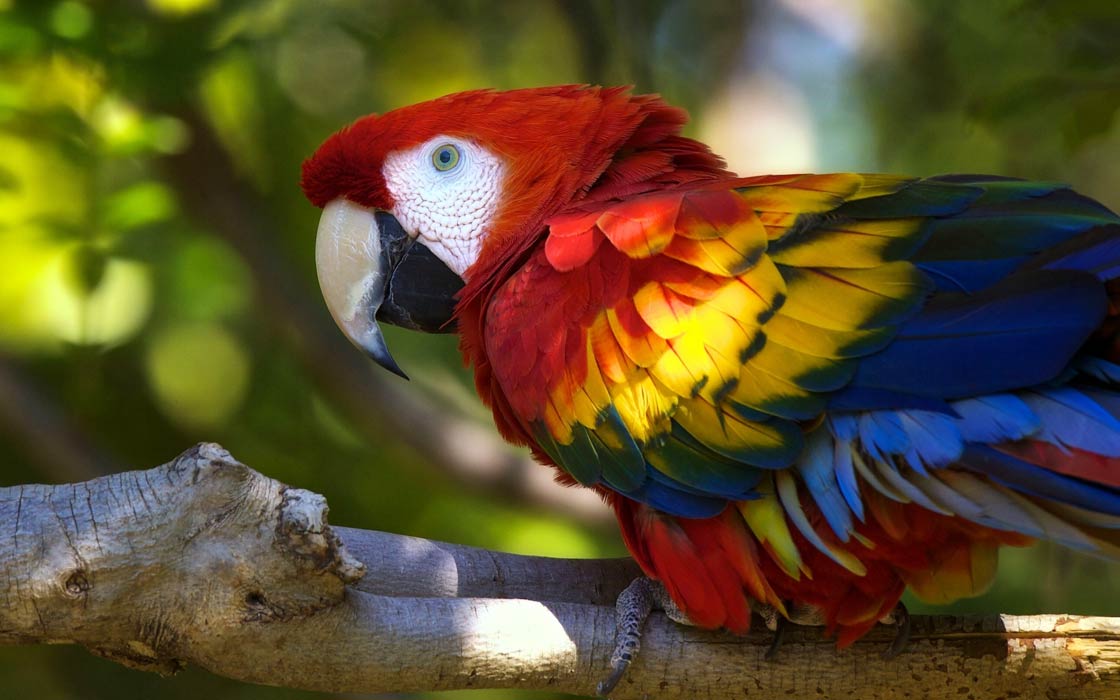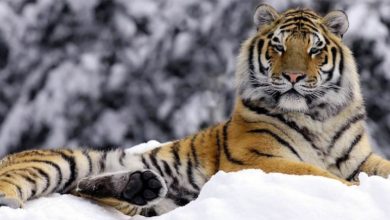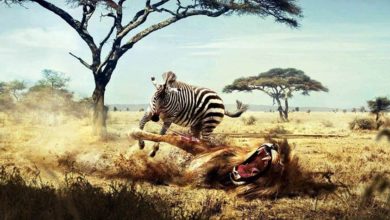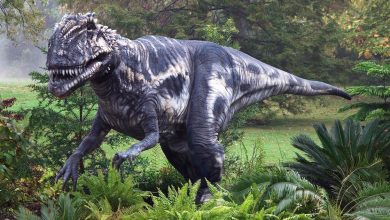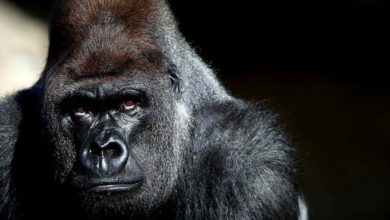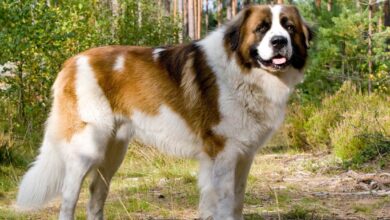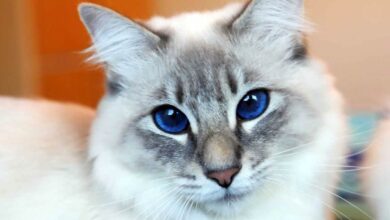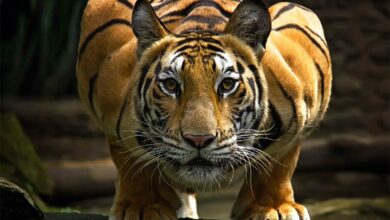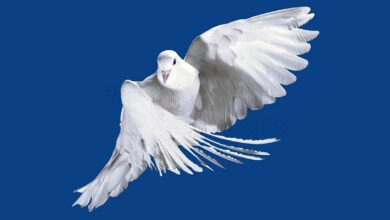Parrots – beautiful and smart birds
Parrots are one of the most mesmerizing creatures in the avian world. With their vibrant plumage, incredible intelligence, and their ability to mimic human speech, they have captured the hearts of people for centuries. From the lush rainforests of South America to the bustling cities of the world, parrots have spread their wings and established themselves as beloved species. In this article, we will delve into the fascinating world of parrots and uncover the secrets behind their stunning beauty and remarkable abilities.
Parrots are a group of brightly colored birds native to tropical and subtropical regions around the world. They belong to the order Psittaciformes and are known for their distinctive hooked beaks, zygodactyl feet (two toes facing forward and two facing backward), and the ability to mimic human speech and other sounds.
Parrots come in a variety of sizes, from the tiny pygmy parrot to the large macaws, and exhibit a wide range of colors, including green, red, blue, yellow, and a rainbow of other hues. Parrots are intelligent birds, with some species exhibiting remarkable problem-solving and cognitive abilities, and are highly social, often living in large flocks. Many species of parrots are threatened by habitat loss and illegal trapping for the pet trade, making conservation efforts for these fascinating birds crucial for their survival.
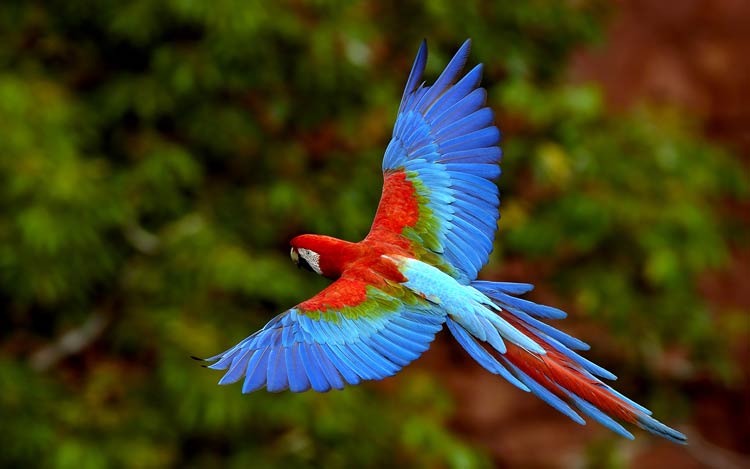
Taxonomy
Parrots belong to the order Psittaciformes, which includes over 350 species of birds found in tropical and subtropical regions around the world. They are divided into two main families: the true parrots (Psittacidae) and the cockatoos (Cacatuidae).
Within the family Psittacidae, parrots are further divided into several subfamilies, including the lorikeets, lovebirds, amazons, and African parrots.
The classification of parrots is constantly evolving as new genetic studies are conducted, and some species may be reclassified as new information becomes available. However, the overall taxonomic structure of the order Psittaciformes remains relatively stable, with most species belonging to one of the two main families.
Scientific classification
- Kingdom: Animalia
- Phylum: Chordata
- Class: Aves
- Clade: Psittacopasserae
- Order: Psittaciformes
- Superfamilies
- Vastanavis
- Quercypsitta
- Paleopsittacus
- Cacatuoidea (cockatoos)
- Psittacoidea (true parrots)
- Strigopoidea (New Zealand parrots)

Basic Facts About Parrots
- Distribution
Parrots are found in tropical and subtropical regions around the world, including South America, Africa, Australia, and some islands in the Pacific. - Size
Parrots come in a wide range of sizes, from the tiny pygmy parrot, which measures only about 10 cm in length, to the large macaws, which can reach up to 100 cm in length. - Plumage
Parrots are known for their brightly colored plumage, with many species displaying a combination of green, red, blue, yellow, and other hues. - Beak
Parrots have a strong, hooked beak that they use for cracking open hard seeds and nuts, as well as for climbing and manipulating objects. - Feet
Parrots have zygodactyl feet, with two toes facing forward and two facing backward, which allows them to grip branches and other objects easily. - Intelligence
Parrots are highly intelligent birds, with some species exhibiting remarkable problem-solving and cognitive abilities. - Speech
Many species of parrots are capable of mimicking human speech and other sounds, making them popular pets. - Social behavior
Parrots are social birds, often living in large flocks in the wild. They form strong bonds with their mates and engage in a wide range of social behaviors, such as preening, mutual feeding, and courtship displays. - Diet
Parrots feed on a variety of foods, including seeds, fruits, nuts, and insects, depending on the species and their habitat. - Conservation
Many species of parrots are threatened by habitat loss and illegal trapping for the pet trade, making conservation efforts for these fascinating birds crucial for their survival.
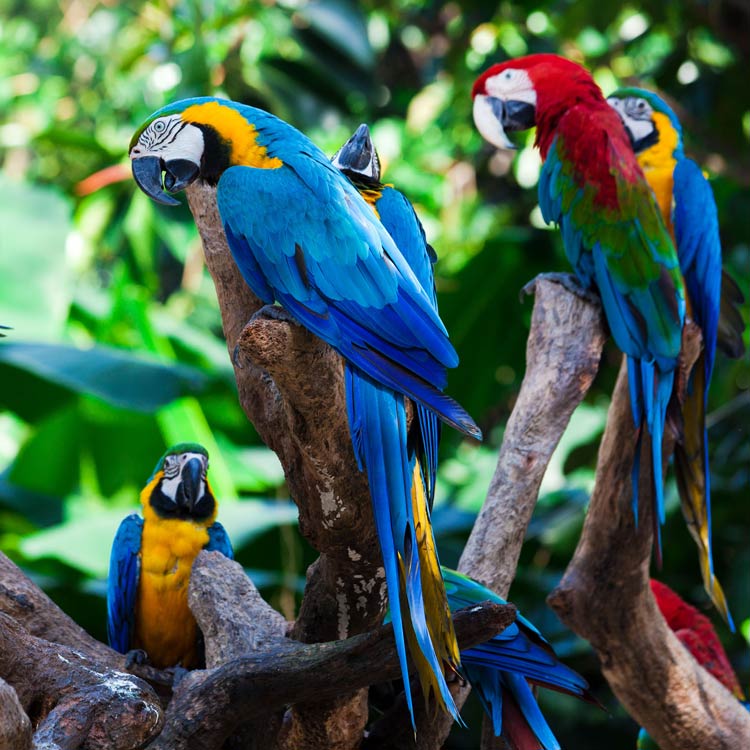
Distribution and habitat
Parrots are found in tropical and subtropical regions around the world, including South America, Africa, Australia, and some islands in the Pacific. Some species have also established populations in areas outside their native range, such as the introduced populations of monk parakeets in the United States.
The specific habitats of parrots vary greatly depending on the species, but they generally prefer dense forests, woodlands, and other areas with abundant vegetation. Some species, such as the lorikeets, are found in more arid regions and are adapted to forage for nectar and pollen in these environments.
In the wild, parrots live in large flocks and are highly social birds, with strong bonds forming between mates and between family members. They are known for their loud calls, which are used to communicate with each other and maintain social bonds within their flocks.
Many species of parrots are threatened by habitat loss and degradation, as well as by illegal trapping for the pet trade. Conservation efforts, including habitat protection and regulation of the pet trade, are crucial for the survival of these fascinating birds.
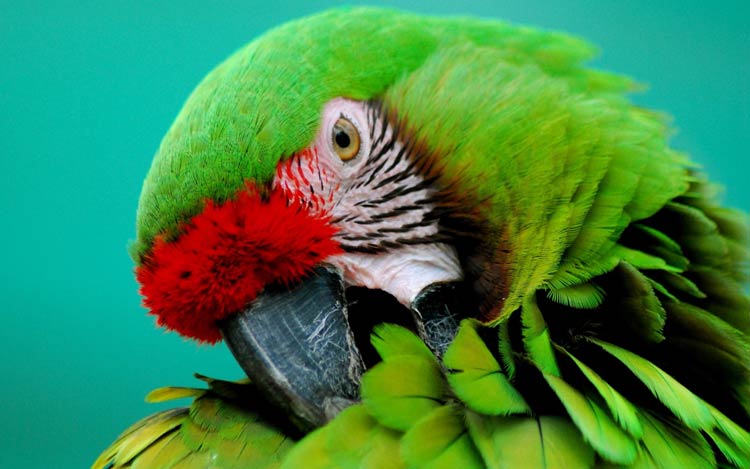
Characteristics
Appearance
Parrots are known for their brightly colored plumage, which comes in a wide range of hues, including green, red, blue, yellow, and many others. Their feathers are often iridescent, creating a rainbow of colors as the light strikes them at different angles.
Parrots have a distinctive hooked beak that is strong and sharp, allowing them to crack open hard seeds and nuts, as well as manipulate objects and climb. Their feet are zygodactyl, with two toes facing forward and two facing backward, providing a strong grip on branches and other objects.
In terms of size, parrots range from the tiny pygmy parrot, which measures only about 10 cm in length, to the large macaws, which can reach up to 100 cm in length.
Overall, parrots are striking birds, known for their vibrant plumage, distinctive beaks, and zygodactyl feet, making them one of the most recognizable bird groups in the world.
Size
Parrots come in a wide range of sizes, with the smallest species measuring around 10 cm (3.9 inches) in length and the largest species reaching up to 100 cm (39.4 inches) in length.
Here are some examples of parrot sizes:
- Pygmy parrot: 10 cm (3.9 inches)
- Lovebird: 12 cm (4.7 inches)
- African grey parrot: 33 cm (13 inches)
- Amazon parrot: 30-40 cm (11.8-15.7 inches)
- Macaw: 70-100 cm (27.6-39.4 inches)
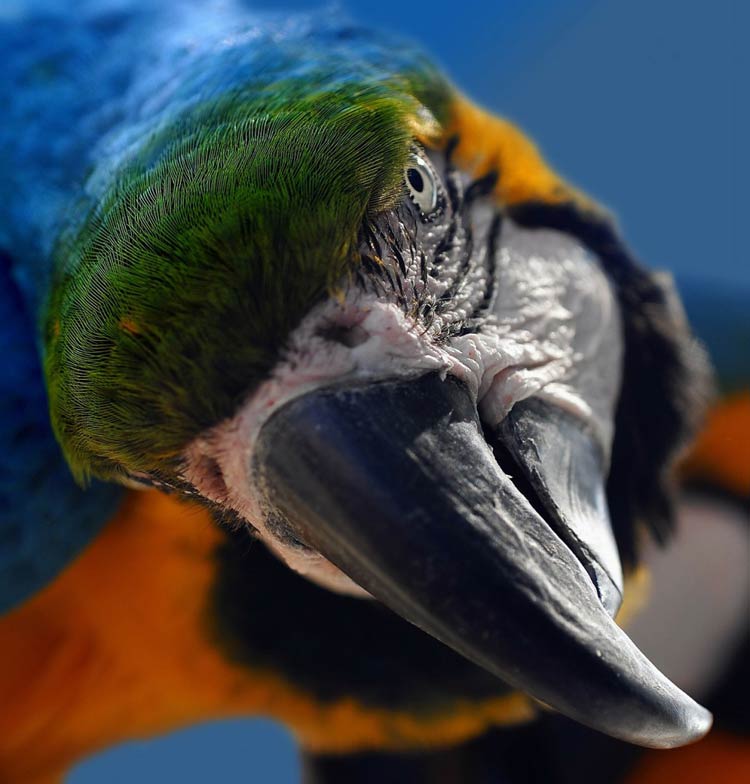
Behavior, Lifestyle and Ecology
Parrots are highly social birds, with many species living in large flocks in the wild. They form strong bonds with their mates and engage in a wide range of social behaviors, such as preening, mutual feeding, and courtship displays.
In terms of behavior, parrots are also known for their intelligence, with some species exhibiting remarkable problem-solving and cognitive abilities. Many species are also capable of mimicking human speech and other sounds, making them popular pets.
Parrots feed on a variety of foods, including seeds, fruits, nuts, and insects, depending on the species and their habitat. They have strong, hooked beaks that they use to crack open hard seeds and nuts, as well as manipulate objects and climb.
In terms of lifestyle, parrots are arboreal birds, spending most of their time in trees and other elevated perches. They are also strong fliers, with some species capable of long-distance migration.
In terms of ecology, parrots play important roles in their ecosystems as seed dispersers, pollinators, and as prey for other animals, such as snakes, birds of prey, and mammals.
However, many species of parrots are threatened by habitat loss and degradation, as well as by illegal trapping for the pet trade. Conservation efforts, including habitat protection and regulation of the pet trade, are crucial for the survival of these fascinating birds.
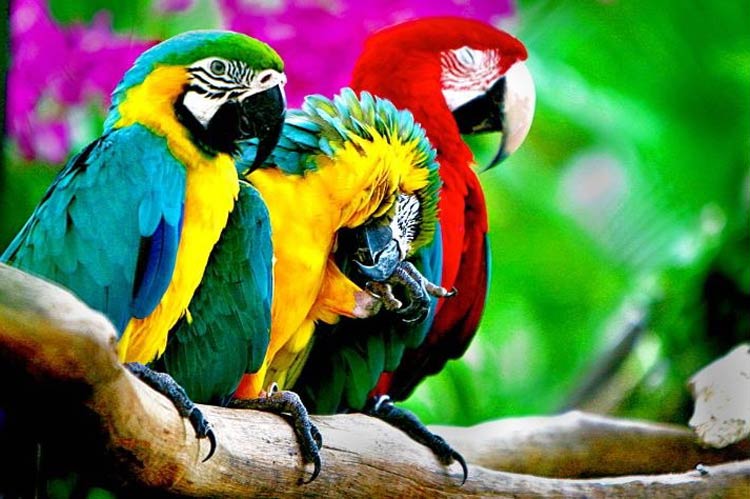
Diet
Parrots have a varied diet that depends on the species and their natural habitat. In general, parrots feed on a variety of foods, including:
- Seeds
Many species feed on the seeds of trees, shrubs, and other plants, using their strong, hooked beaks to crack open hard seed casings. - Fruits
Many parrot species feed on fruit, either foraging for wild fruits or feeding on cultivated crops. Some species, such as the lorikeets, have specialized brush-tipped tongues that they use to extract nectar from flowers. - Nuts
Some species of parrots, such as the macaws, feed on nuts, using their powerful beaks to crack open the hard shells. - Insects
Some species of parrots, such as the African grey parrot, feed on insects and other small animals as a source of protein.
In the wild, parrots forage for food in flocks, with individual birds taking turns to feed and protect the flock from predators. In captivity, a balanced diet of seeds, fruits, vegetables, and nuts should be provided, along with a source of calcium and vitamin supplements.
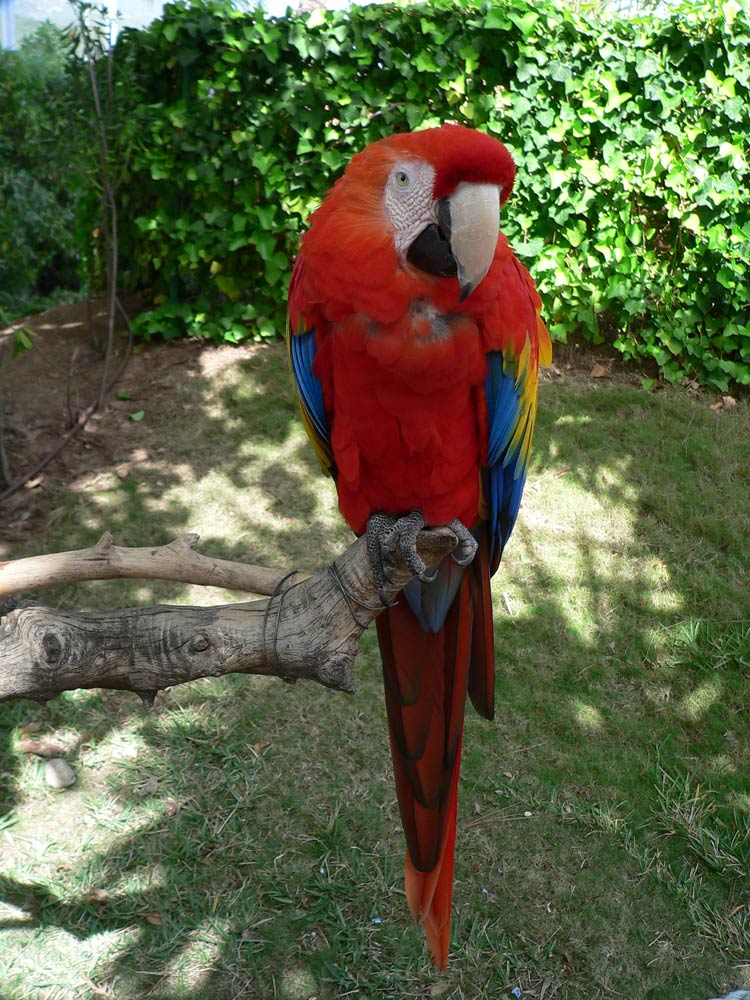
Reproduction and parenting
Parrots are generally monogamous birds, with pairs forming long-lasting bonds. During the breeding season, parrots engage in elaborate courtship displays, which may include vocalizations, feather displays, and mutual preening.
The female parrot typically lays a clutch of 2-6 eggs, which she incubates for around 20-30 days. Both the male and female parrots play a role in incubating the eggs and feeding the chicks.
Once the chicks hatch, they are fed by both parents and cared for until they are able to fledge and become independent. This process can take several months, with some species of parrots taking up to a year to reach maturity.
Parenting behavior in parrots varies among species, with some species, such as the African grey parrot, being known for their highly developed nurturing instincts. In some species, both parents work together to raise the chicks, while in others, only the female parrot is responsible for caring for the young.
Parrots are devoted parents, working together to ensure the survival and growth of their young, and contributing to the preservation of their species in the wild.
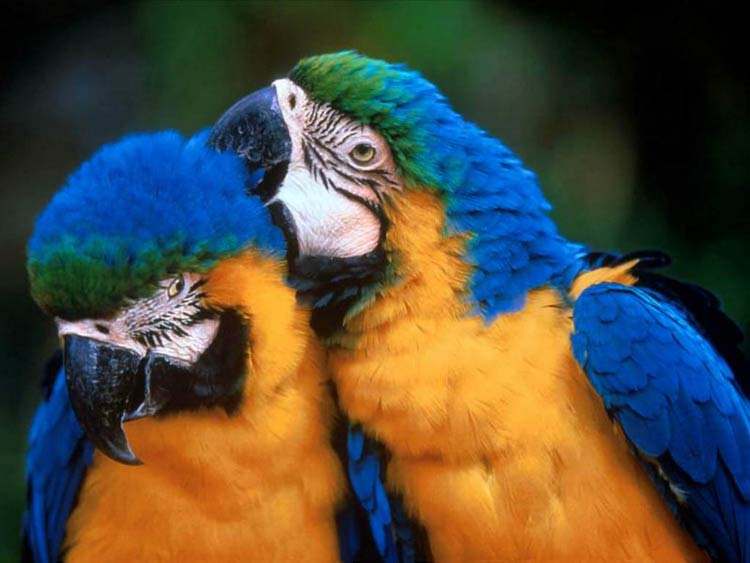
Intelligence and learning
Parrots are known for their high level of intelligence, with many species exhibiting advanced cognitive abilities. Here are a few key facts about the intelligence and learning of parrots:
- Problem-solving
Parrots are able to solve complex problems, such as finding food hidden in a puzzle box, and they are also able to understand cause-and-effect relationships. - Mimicry
Parrots are famous for their ability to mimic human speech and other sounds, with the African grey parrot being particularly skilled in this regard. Some parrots can learn to mimic hundreds of words and phrases. - Social behavior
Parrots are highly social birds that are able to recognize individual members of their flock and remember relationships with other birds. They are also able to communicate with their flock members and use different calls to signal different meanings. - Playfulness
Parrots are playful birds that love to play with toys and interact with their owners. They are highly intelligent and can become bored easily, so it’s important to provide plenty of mental stimulation and physical activity. - Tool use
Some species of parrots are able to use tools, such as sticks, to crack open nuts and seeds. This demonstrates their ability to manipulate objects and problem-solve.
The intelligence of parrots has been the subject of much scientific study, and it is clear that they are highly intelligent and capable of advanced cognitive abilities. By understanding the intelligence of parrots, we can better appreciate their unique and fascinating characteristics.
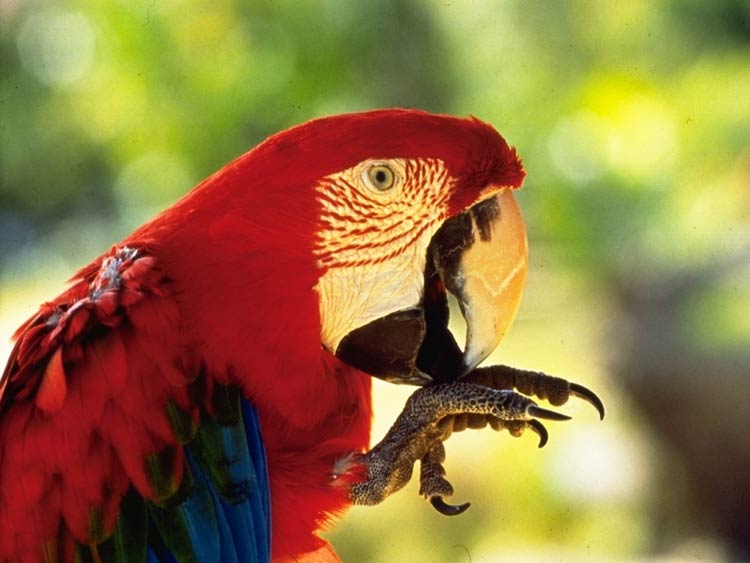
Sound imitation and speech
Parrots are known for their ability to imitate sounds, including human speech, and this is one of the things that makes them so fascinating. Here are a few key facts about the sound imitation and speech abilities of parrots:
- Vocal mimicry
Parrots are capable of imitating a wide range of sounds, including human speech, animal calls, and even mechanical sounds. They are also able to learn new sounds and incorporate them into their vocal repertoire. - Speech production
Parrots produce speech by using their syrinx, which is the equivalent of a human’s larynx. This allows them to produce a wide range of sounds and vocalizations. - African grey parrot
The African grey parrot is one of the most skilled species at imitating human speech and is often used in scientific studies of vocal mimicry in parrots. - Ability to understand speech
In addition to producing speech, some species of parrots are able to understand human speech and respond to specific commands. For example, they may be able to learn the names of objects and retrieve them when asked. - Vocabulary size
Parrots can learn a large vocabulary, with some birds learning hundreds of words and phrases. However, it’s important to note that their ability to understand and use language is still the subject of much scientific debate and research.
The sound imitation and speech abilities of parrots are a source of amazement and fascination, and they demonstrate the high level of intelligence that these birds possess. Whether they are truly capable of understanding human speech or not, there is no denying that they are capable of producing a wide range of sounds and vocalizations that make them unique and entertaining pets.
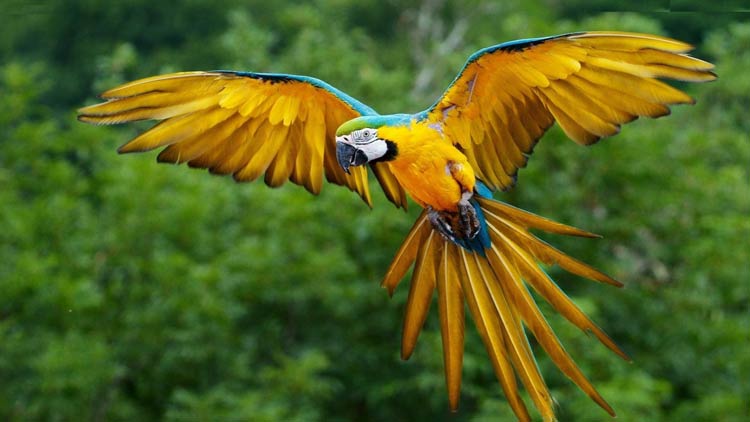
Songs
Parrots are known for their musical abilities, with many species producing melodious and complex songs. Here are a few key facts about the songs of parrots:
- Complex songs
Some species of parrots, such as the Australian parakeet, produce complex and musical songs that are made up of multiple notes and sounds. These songs can be quite intricate and beautiful. - Singing ability
Parrots are capable of singing and producing a wide range of vocalizations, including complex songs, chirps, and whistles. - Song learning
Parrots are able to learn songs from other birds, as well as from their human owners. They are also able to modify and personalize their songs over time. - Song as a means of communication
The songs of parrots serve a variety of purposes, including attracting mates, defending territory, and communicating with other birds. - Regional variation
Parrots can have different songs depending on their location, with birds from different regions having distinct vocalizations.
The songs of parrots are an important part of their behavior and biology, and they demonstrate the musical abilities of these fascinating birds. Whether they are singing complex melodies or simple chirps, the songs of parrots are a joy to listen to and provide insight into the behavior and communication of these birds.

Cooperation
Parrots are known for their ability to cooperate and form social bonds with each other, as well as with humans. Here are a few key facts about cooperation in parrots:
- Social bonds
Parrots form strong social bonds with their mates and other birds in their flock. These bonds can be maintained over long periods of time and provide the birds with a sense of security and support. - Cooperative behavior
Some species of parrots are known to engage in cooperative behavior, such as sharing food or helping to rear their young. This behavior can be seen in both wild and captive populations. - Joint problem-solving
Parrots have been observed working together to solve problems, such as retrieving food from a difficult-to-reach location. This behavior demonstrates their ability to cooperate and communicate effectively with each other. - Bonding with humans
Parrots are also able to form strong bonds with their human owners, and many individuals are affectionate and social with their caregivers.
The cooperative behavior and social bonds of parrots are important aspects of their biology and behavior, and they demonstrate the complex social lives of these fascinating birds. Whether they are bonding with each other or with their human caregivers, parrots are highly social creatures that thrive in environments where they are able to form strong social bonds.
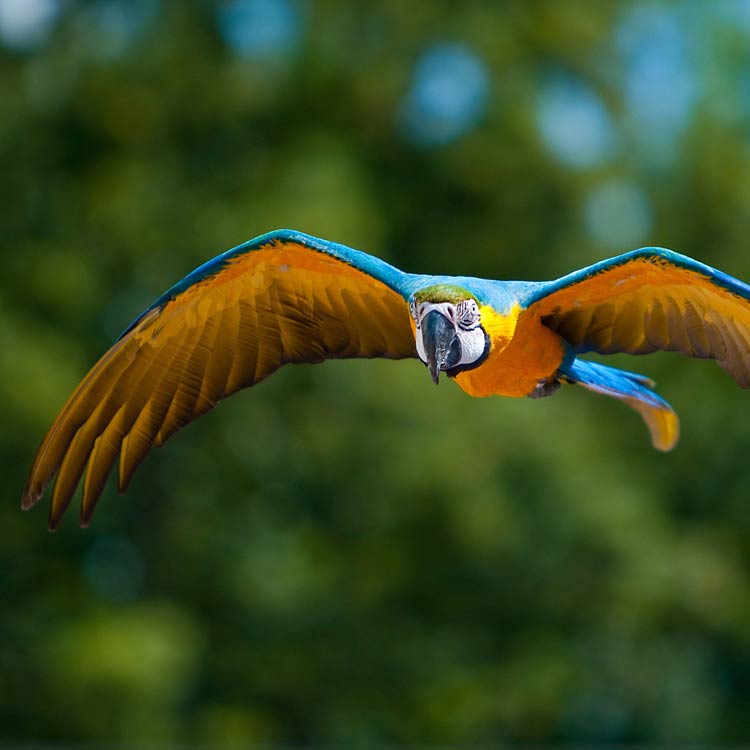
Parrots as pets
Parrots are popular pets due to their intelligence, social nature, and ability to mimic human speech. Here are a few key facts about keeping parrots as pets:
- Popularity
Parrots are one of the most popular types of pet birds, with millions of individuals kept in homes around the world. - Lifespan
Parrots can live for many years, with some species living for more than 50 years in captivity. This means that owning a parrot is a long-term commitment. - Care requirements
Parrots require a lot of attention, exercise, and mental stimulation, and they need a large cage, toys, and a healthy diet. Owners should also be prepared to spend a significant amount of time each day interacting with their pets. - Training and socialization
Parrots are intelligent birds that can be trained to perform various behaviors and can learn to mimic human speech. They also benefit from socialization with their owners and other birds. - Considerations
Before getting a parrot, potential owners should consider the cost, time commitment, and space requirements of caring for these birds. They should also research the specific needs and behaviors of the species they are interested in.
Owning a parrot can be a rewarding experience, but it requires a significant investment of time, money, and effort. Potential owners should carefully consider their ability to provide for the needs of these fascinating birds before making a decision to bring one into their home.
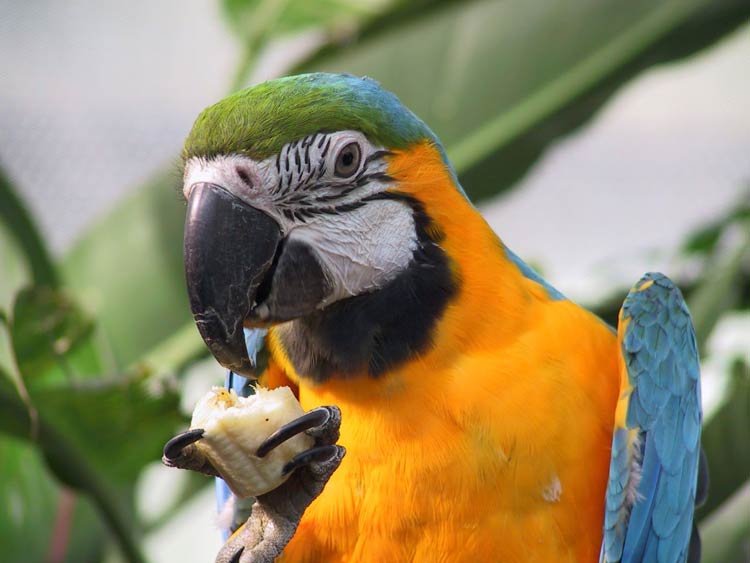
Parrots in culture
Parrots have played a significant role in human culture and have been depicted in art, literature, and folklore for centuries. Here are a few key facts about parrots in culture:
- Mythology and folklore
Parrots have been featured in the folklore and mythology of many cultures, including Native American and South American cultures. In some cultures, parrots are seen as symbols of good luck, while in others they are associated with death and misfortune. - Artistic representation
Parrots have been depicted in art for centuries, appearing in paintings, sculptures, and other forms of artistic expression. These depictions often emphasize the birds’ brightly colored feathers, distinctive beaks, and playful personalities. - Literature
Parrots have also played a role in literature, appearing in works such as Shakespeare’s play “The Tempest” and in the stories of the Brothers Grimm. In these works, parrots are often depicted as intelligent and mischievous creatures. - Popular culture
Parrots are also popular in contemporary culture, appearing in movies, television shows, and advertisements. These depictions often emphasize the birds’ ability to mimic human speech and their playful personalities.
The representation of parrots in culture reflects the birds’ unique place in the world, as well as their intelligence, beauty, and playfulness. Whether they are depicted in mythology and folklore, artistic representation, literature, or popular culture, parrots continue to capture the imagination of people around the world.

Parrots in Mythology
Parrots have played a significant role in the mythology and folklore of many cultures around the world. Here are a few examples:
- South American mythology
In South American mythology, the parrot is often seen as a symbol of happiness and is believed to bring good luck. In some legends, the parrot is said to have the ability to heal the sick and bring peace to those in conflict. - Hindu mythology
In Hindu mythology, the parrot is associated with the god of love, Kama. The parrot is seen as a symbol of love and passion and is said to be able to repeat the sweet words of lovers. - Native American mythology
In Native American mythology, the parrot is seen as a messenger between the physical and spiritual worlds. In some legends, the parrot is said to bring messages from the gods to the people and to be a symbol of hope and renewal. - African mythology
In African mythology, the parrot is often associated with the sun and is seen as a symbol of renewal and hope. In some legends, the parrot is said to bring messages of hope and renewal to those in need.
These are just a few examples of the role that parrots have played in mythology and folklore around the world. Whether they are seen as symbols of love and passion, messengers of hope, or bringers of good luck, parrots continue to captivate people with their beauty and unique abilities.
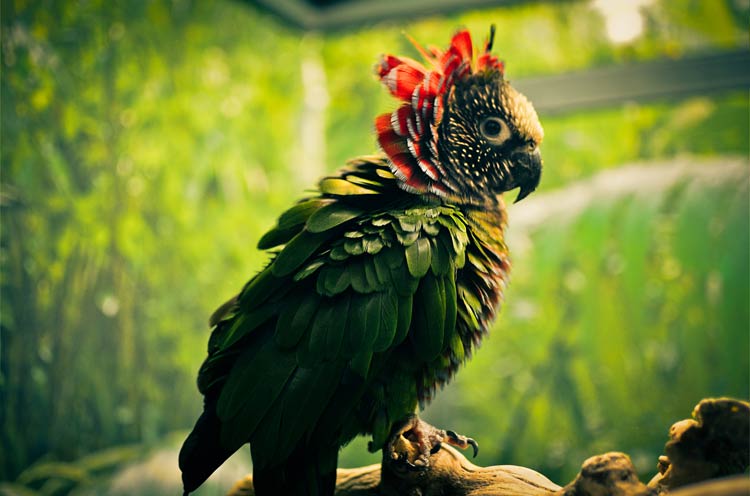
Parrots in movies
Parrots have been featured in a number of films, playing a variety of roles from comedic sidekicks to dramatic symbols. Here are a few examples of parrots in movies:
- “Aladdin” (1992)
In the Disney animated classic “Aladdin,” a parrot named Iago serves as the sidekick to the villain Jafar. Iago provides comic relief and is known for his sarcastic wit and ability to mimic human speech. - “Rio” (2011)
The animated film “Rio” features a blue macaw named Blu who is taken from his domesticated life in Minnesota to Rio de Janeiro, Brazil. Throughout the film, Blu learns to embrace his wild heritage and becomes a hero in his own right. - “Pirates of the Caribbean” (2003-2017)
The popular pirate film series “Pirates of the Caribbean” features a parrot named Polly, who serves as the sidekick to the pirate Captain Jack Sparrow. Polly provides comic relief and is known for his ability to mimic human speech and mischievous behavior. - “The Incredible Journey of Doctor Dolittle” (1998)
In the film “The Incredible Journey of Doctor Dolittle,” a parrot named Polynesia serves as the doctor’s companion and helps him communicate with the animals he encounters on his journey.
Parrots have been a popular subject of films for their ability to mimic human speech, their colorful feathers, and their playful personalities. They provide comic relief and add to the visual appeal of many movies.

Predators and Threats
Parrots face a variety of threats in the wild, including:
- Predation
Parrots are preyed upon by a range of animals, including birds of prey, snakes, and mammals such as monkeys and possums. - Habitat loss and degradation
The loss and degradation of natural habitats, including forests and woodlands, is a major threat to parrot populations. Destruction of nesting sites, food sources, and migration corridors can have devastating effects on parrot populations. - Illegal trapping for the pet trade
Some species of parrots, particularly those with brightly colored plumage and the ability to mimic human speech, are highly sought after as pets. Illegal trapping of parrots for the pet trade can have a significant impact on wild populations. - Climate change
Parrots, like many other bird species, are sensitive to changes in their environment and may be affected by changes in precipitation, temperature, and other climatic factors.
Conservation efforts, including habitat protection, regulation of the pet trade, and research into the impacts of climate change, are essential for the survival of parrot species in the wild. By protecting parrot populations, we can ensure the preservation of these fascinating birds for future generations to enjoy.
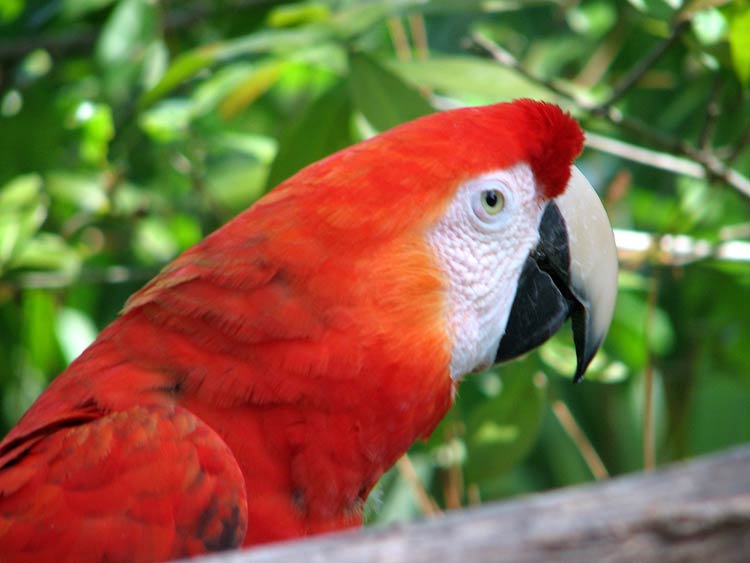
Feral populations
Feral populations are populations of domesticated or captive animals that have escaped or been released into the wild and have established themselves as self-sustaining populations. Parrots are one species that has established feral populations in many areas around the world.
In some cases, feral parrots are the result of escaped pets or captive birds that have been released into the wild. In other cases, they may be the descendants of captive birds that have escaped from aviaries or bird collections.
Feral parrot populations can have a number of impacts on native wildlife and ecosystems. For example, in some cases, feral parrots may compete with native bird species for food and habitat, leading to a decline in native bird populations. They may also introduce new diseases to native bird populations, which can have a significant impact on the health of those populations.
On the other hand, feral parrot populations can also have positive impacts on the environment. For example, some species of parrots play important roles as seed dispersers and pollinators in their native habitats.
The presence of feral parrot populations is a complex issue that requires careful management and conservation efforts to minimize negative impacts and maximize positive impacts. This can include measures such as controlling the populations through trapping and relocation, protecting important habitats, and monitoring the health and populations of both the feral parrots and native wildlife species.
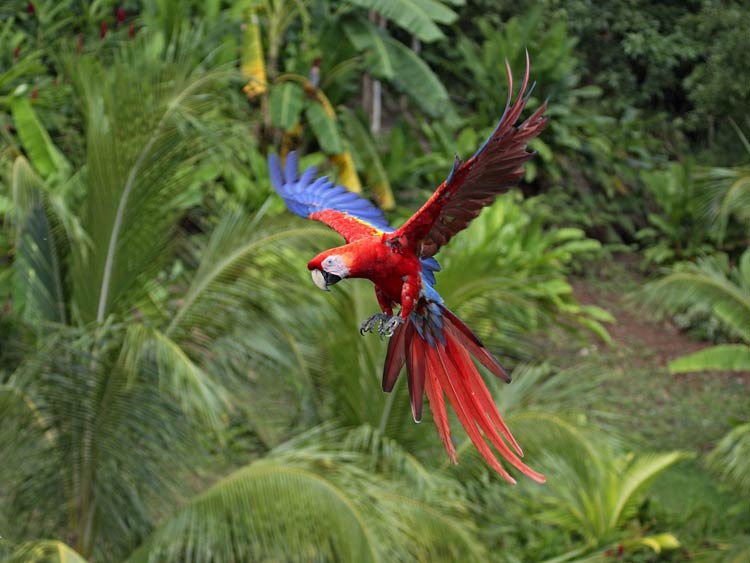
Interactions with humans
Parrots have a long history of interaction with humans, with some species being kept as pets for thousands of years.
- Pet ownership
Many species of parrots are popular pets, particularly due to their intelligence, ability to mimic human speech, and playful personalities. However, owning a pet parrot requires a significant commitment of time and resources, as well as a deep understanding of the bird’s needs and behavior. - Agriculture
Some species of parrots, such as the kea in New Zealand and the maroon-fronted parrot in Mexico, are known for causing damage to crops, particularly in areas where their natural habitats have been degraded or destroyed. - Cultural significance
Parrots have been depicted in art, literature, and mythology across many cultures, and some species hold special significance for indigenous peoples, who view them as sacred or symbolize their cultures. - Ecotourism
In many countries, parrots are popular attractions for birdwatchers and ecotourists, providing important economic benefits to local communities.
Despite their popularity and cultural significance, parrots are also threatened by habitat loss and illegal trapping for the pet trade, and many species are at risk of extinction. Conservation efforts and responsible pet ownership are essential for ensuring the survival of parrot species and their continued interaction with humans.
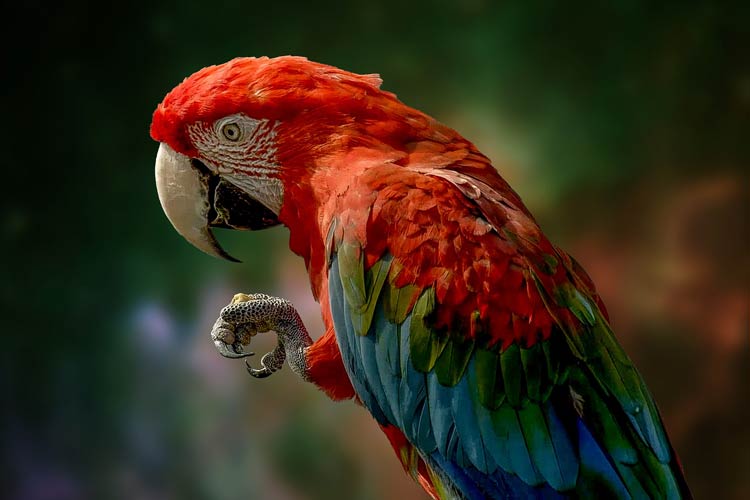
Population
The population of parrots varies greatly among species, with some species having large and stable populations, while others are critically endangered.
- Threatened species
According to the International Union for Conservation of Nature (IUCN), over a third of all parrot species are considered to be threatened with extinction, due to a variety of factors including habitat loss, trapping for the pet trade, and other human activities. - Endemic species
Some species of parrots, such as the Kakapo in New Zealand and the Military Macaw in Mexico, are found only in specific geographic regions and have small and highly threatened populations. - Common species
Other species of parrots, such as the African grey parrot and the Amazon parrot, have large and stable populations, although they are still threatened by habitat loss and other human activities.
Conservation efforts, including habitat protection, regulation of the pet trade, and research into the impacts of climate change, are essential for the survival of parrot species in the wild. By protecting parrot populations, we can ensure the preservation of these fascinating birds for future generations to enjoy.
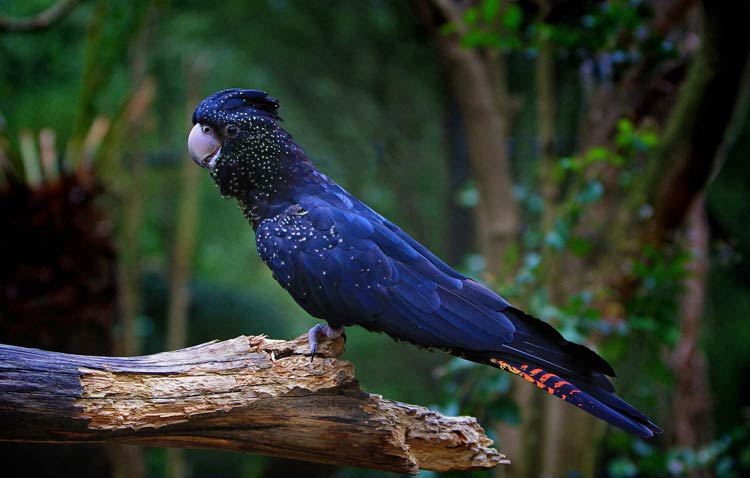
Status and conservation
Parrots face a variety of threats, including habitat loss, trapping for the pet trade, and other human activities, and many species are at risk of extinction.
- International Union for Conservation of Nature (IUCN) status: According to the IUCN, over a third of all parrot species are considered to be threatened with extinction. Some species, such as the Kakapo in New Zealand and the Military Macaw in Mexico, are critically endangered and face a high risk of extinction in the near future.
- Conservation efforts: To address the threats facing parrot populations, a range of conservation efforts are underway, including:
- Habitat protection: Protecting natural habitats, including forests and woodlands, is essential for the survival of parrot species.
- Regulation of the pet trade: Regulating the trade in parrots, including measures to prevent illegal trapping and smuggling, is essential for protecting wild populations.
- Research and monitoring: Understanding the biology and ecology of parrot species and monitoring their populations is essential for the development of effective conservation strategies.
- Reforestation and habitat restoration: Restoring degraded and destroyed habitats, including through reforestation efforts, is important for the survival of parrot species and the maintenance of healthy ecosystems.
By working together to protect and conserve parrot populations, we can ensure the survival of these fascinating birds for future generations to enjoy.

Kākāpō – the heaviest parrot
Kākāpō (Strigops habroptilus), also known as the owl parrot, is a flightless bird species native to New Zealand. It is the heaviest parrot species, with males weighing 1.5–4 kg (3.3–9 lb) and length 58 to 64 cm (23 to 25 in). The species is characterized by its distinctive round, green feathers, large flattened beak, and nocturnal lifestyle.
Kākāpō has unique behavioral and ecological adaptations, such as the ability to locate mates through long-range calls and a dietary dependence on native New Zealand vegetation. Unfortunately, the species is endangered, with only about 250 individuals remaining in the wild. Conservation efforts, including breeding and release programs, are underway to protect and increase the population of this unique bird.
Kākāpō are the heaviest living parrot species, weighing on average about 0.4 kg (0.88 lb) more than the largest flying parrot, the hyacinthine macaw.

Hyacinth macaw / hyacinthine macaw (Anodorhynchus hyacinthinus) – the largest flying parrot
The hyacinth macaw (Anodorhynchus hyacinthinus) is the largest flying parrot species, with a length of up to 100 cm / (3 ft 3 in) (including its tail) and a wingspan of approximately 1 meter (3 ft 3 in). On average, they weigh 1.2–1.7 kg (2.65 – 3.7 lb). This species is known for its bright blue plumage, large, powerful beak, and high intelligence.
The hyacinth macaw is native to the savannas and forests of central and eastern South America. Hyacinth Macaws are easily recognizable by their bright blue plumage, which covers their entire body and long tails. They have a large, powerful beak that is capable of cracking even the toughest nuts and seeds, which make up a significant part of their diet.
These parrots are known for their high intelligence and affectionate nature, and they are often kept as pets. In the wild, Hyacinth Macaws are considered to be endangered, due to habitat loss and illegal trapping for the pet trade. Conservation efforts are underway to protect these birds and their habitats in order to ensure their survival.
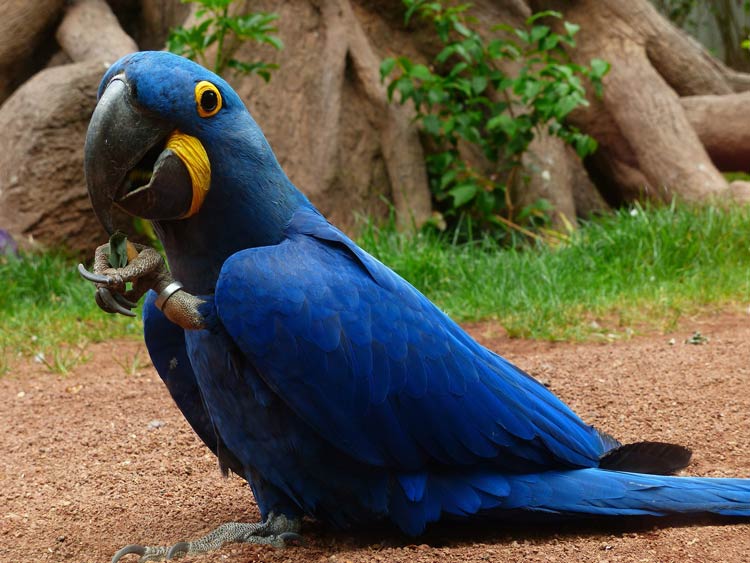
Pygmy parrots – the smallest parrots
Pygmy parrots are a group of small parrot species that are known for their tiny size and brightly colored plumage. They are found in various regions across the world, including the forests of Africa, Australia, and South America.
The smallest pygmy parrot species is the Buff-faced Pygmy Parrot, which is only about 8 cm long. Despite their small size, pygmy parrots are known for their energetic and playful personalities. They feed on a variety of foods, including nectar, fruit, and insects.
Many species of pygmy parrots live in the forest canopy and are important pollinators of flowering plants. However, some species are threatened by habitat loss and other forms of environmental degradation, and conservation efforts are underway to protect these tiny birds and their habitats.
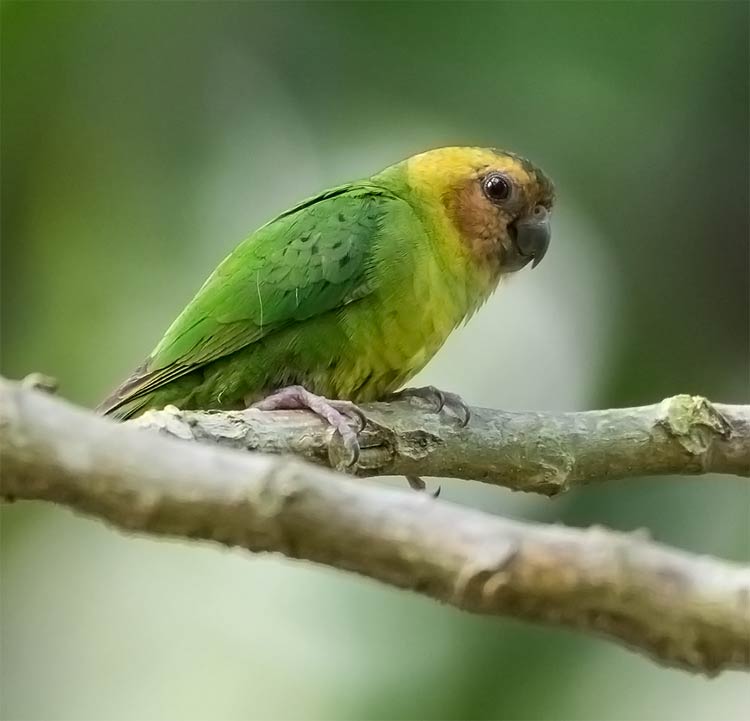
Parrot in numbers
There are approximately 398 species of parrots in the world, belonging to the family Psittacidae. Some species of parrots are widely distributed and abundant, while others are critically endangered and facing a high risk of extinction. Here are some parrot-related numbers to consider:
- Species diversity
There are approximately 398 species of parrots in the world, belonging to the family Psittacidae. These species are found across a wide range of habitats, from tropical forests to deserts, and vary in size, shape, and color. - Global distribution
Parrots are found across the world, with the highest diversity of species found in tropical regions, particularly South America, Central America, and the Caribbean. - Threatened species
According to the IUCN, over a third of all parrot species are considered to be threatened with extinction. Some species, such as the Kakapo in New Zealand and the Military Macaw in Mexico, are critically endangered and face a high risk of extinction in the near future. - Pet trade
Thousands of parrots are traded as pets each year, with some species, such as the African grey parrot, being particularly popular. This trade is a major threat to wild populations, as it contributes to habitat loss and the spread of disease. - Economic significance
Parrots are important to local economies, providing valuable income through ecotourism and the pet trade. In some countries, parrots also play a role in agriculture, by consuming crops or causing damage to crops.
By understanding the numbers and trends related to parrots, we can better protect and conserve these fascinating birds for future generations to enjoy.
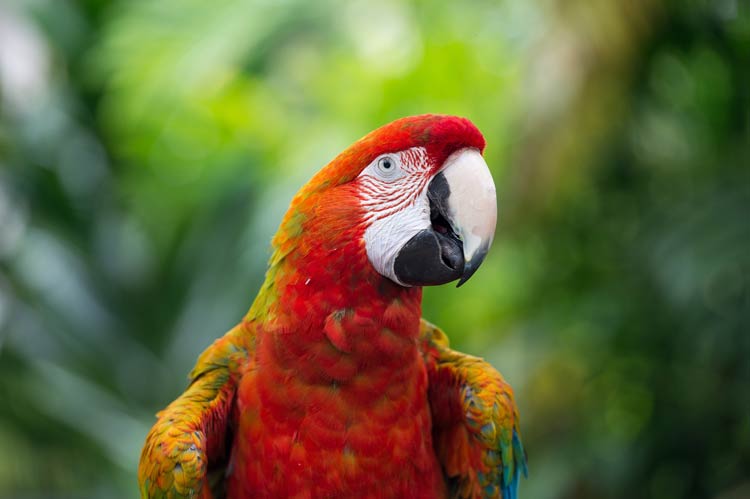
Interesting facts about Parrots
Parrots are fascinating birds that are known for their bright colors, ability to mimic human speech, and playful personalities. Here are a few interesting facts about parrots:
- Intelligent birds
Parrots are highly intelligent birds and are capable of complex behaviors and communication, including mimicry and tool use. Some species of parrots, such as the African grey parrot, are considered to be among the most intelligent of all birds. - Vibrant colors
Parrots are known for their vibrant colors, with species ranging from bright greens and blues to brilliant reds, yellows, and oranges. Some species, such as the Hyacinth Macaw, have striking blue plumage, making them one of the most colorful birds in the world. - Long lifespan
Parrots are long-lived birds, with some species capable of living up to 80 years or more in captivity. This makes them a significant investment for pet owners, who must be prepared to care for the birds for a long time. - Colorful plumage
Many species of parrots have brightly colored plumage, with brilliant greens, blues, reds, and yellows being common. These colors are used for attracting mates and identifying members of the same species. - Mimicry
Parrots are famous for their ability to mimic human speech and other sounds, with the African grey parrot being particularly skilled in this regard. Some parrots can learn to mimic hundreds of words and phrases. - Playfulness
Parrots are playful birds that love to play with toys and interact with their owners. They are highly intelligent and can become bored easily, so it’s important to provide plenty of mental stimulation and physical activity. - Social behavior
Many species of parrots are highly social and live in flocks. In the wild, parrots mate for life and form strong bonds with their partners. They are also known for their intelligence, and some species use tools to crack open nuts and seeds. - Diet
Parrots are omnivores and feed on a wide range of food, including seeds, fruits, nuts, and insects. In the wild, they play an important role in seed dispersal and pollination.
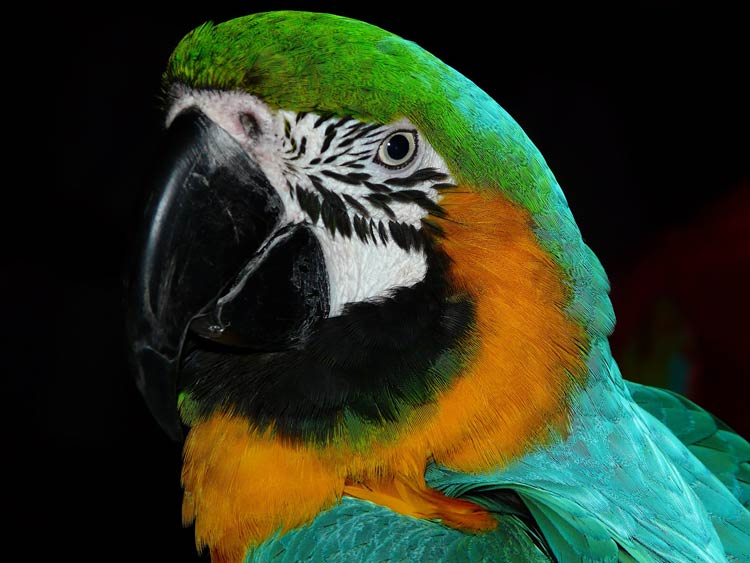
Q&A (questions and answers) about Parrots
Q: What are parrots?
A: Parrots are a group of brightly colored, social birds belonging to the family Psittacidae. They are found across the world and are known for their ability to mimic human speech, playful personalities, and intelligence.
Q: How many species of parrots are there?
A: There are approximately 398 species of parrots in the world.
Q: Where are parrots found?
A: Parrots are found across the world, with the highest diversity of species found in tropical regions, particularly South America, Central America, and the Caribbean.
Q: Why are some species of parrots endangered?
A: Some species of parrots are endangered due to habitat loss, hunting, and the pet trade. The pet trade is a major threat to wild populations, as it contributes to habitat loss and the spread of disease.
Q: What is the lifespan of a parrot?
A: Parrots have a relatively long lifespan, with some species living up to 80 years in captivity. In the wild, the lifespan of a parrot is typically shorter, but can still be several decades.
Q: What do parrots eat?
A: Parrots are omnivores and feed on a wide range of food, including seeds, fruits, nuts, and insects.
Q: What makes parrots unique?
A: Parrots are unique due to their brightly colored plumage, ability to mimic human speech, playful personalities, and intelligence. They are also highly social and mate for life, forming strong bonds with their partners.
Q: Why are parrots important?
A: Parrots are important due to their role in seed dispersal and pollination in the wild, as well as their value as pets and for ecotourism. They are also fascinating and unique creatures that play an important role in the balance of ecosystems and the planet’s biodiversity.


